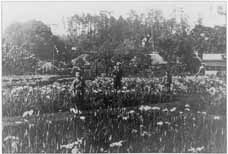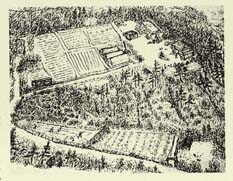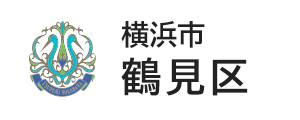- Yokohama-shi Top Page
- Tsurumi Ward Top Page
- Introduction of the ward
- Overview of Tsurumi Ward
- History of Tsurumi Ward
- 4th: Tsurumi, a town ahead of various cultures
Here's the text.
4th: Tsurumi, a town ahead of various cultures
Last Updated July 9, 2024
An airfield in Tsurumi
There were three airfields in Tsurumi during the Taisho era, when people who dreamed of flying into the sky inspired by foreign aviators made their own airplanes. In December 1921 (1921), Tamai Airfield, where Terutaka Tamai made his own airplane, was located in Namamugi. When Shiotamachi was born in April 1923, there is a record of the leaflet of "enforcement of the celebration town system". It was closed after the Great Kanto Earthquake, and a Kirin Brewery Factory was built on the site.
In May 1923, Etsutaro Sori opened the First Air School in Suehirocho and was called Sori Airfield. There are 7 airplanes and 15 trainees. In addition to the training, the general public could enjoy a sightseeing tour over Yokohama for a fee of 15 yen. At Sori Airfield, there was also Shigeno Kibe, a 19-year-old, who was attracting attention as the second female flyer in Japan. Kibe is called a "beautiful man", and he also flew high on a navy aircraft, and was the only woman in the aviation world, was awarded a crown. The smart figure and the sound of the propeller was brave, and the male astronaut was so popular that the promide was sold out in the sky, with the brave figure flying back the silver wings.
In 1924, Kataoka Airfield was opened on a landfill in Suehirocho (currently from the main gate of Nippon Kokan to Irifune Bridge). In addition to the training aircraft, eight aircraft, including reconnaissance aircraft and fighter aircraft, were training astronauts. Both Sori Airfield and Kataoka Airfield provided land reclaimed by Soichiro Asano free of charge, but due to the expansion of the factory, Sori Airfield moved to Funabashi, Chiba Prefecture, and Kataoka Airfield closed.
People's Flowerbed of Western Flowers
Shikoku-born architect Gunnosuke Saijo moved to Tsurumi around 1918 and built three glass-covered greenhouses (approximately 100 tsubo) on the hills of Suwazaka. He grew bulbs and seedlings of western flowers, opened them to the town for free, and was called the "people's flower bed." Seasonal flowers bloomed mainly on western flowers such as tulips, pansies, carnations, and freesia, and it was said that "a paradise like heaven suddenly appeared." However, at that time there was still little interest in Western flowers, few visitors, and the park closed at the beginning of the Showa era.
Mikasa Garden of Iris
Inspired by the prosperity of Kagetsuen, Sekizo Yamazaki in Saitama Prefecture created a row of pine trees and cherry trees around the pond in Fusano in Kishiya in 1920, and transferred 25,000 seedlings from the iris garden in Kamata to open the iris garden. It became famous as "Mikasa Garden of Iris" with the catchphrase of natural beauty. They launched fireworks, created a large Fujidana, brought cowboys from the United States and performed rodeo, but there were few visitors unexpectedly, and in 1927 it was closed due to management difficulties. In 1920, the swimming qualifying for the 7th Antwerp Olympics, which Japan participated for the first time, was held at Fusano Pond. Asakamiya was also present, and a laurel tree of sports tree was planted in commemoration. In 1936, Fusano Pond was officially opened as a pool in Yokohama City, and Hideko Maehata of the Berlin Olympics came to open the pool.

Iris Mikasa Garden (around the first year of Showa)

People's flower bed in Suwazaka
Inquiries to this page
Tsurumi Ward General Affairs Department Ward Administration Promotion Division
Telephone: 045-510-1680
Telephone: 045-510-1680
Fax: 045-510-1891
Email address: tr-kusei@city.yokohama.lg.jp
Page ID: 596-431-140













